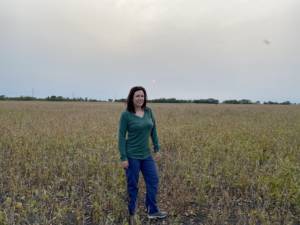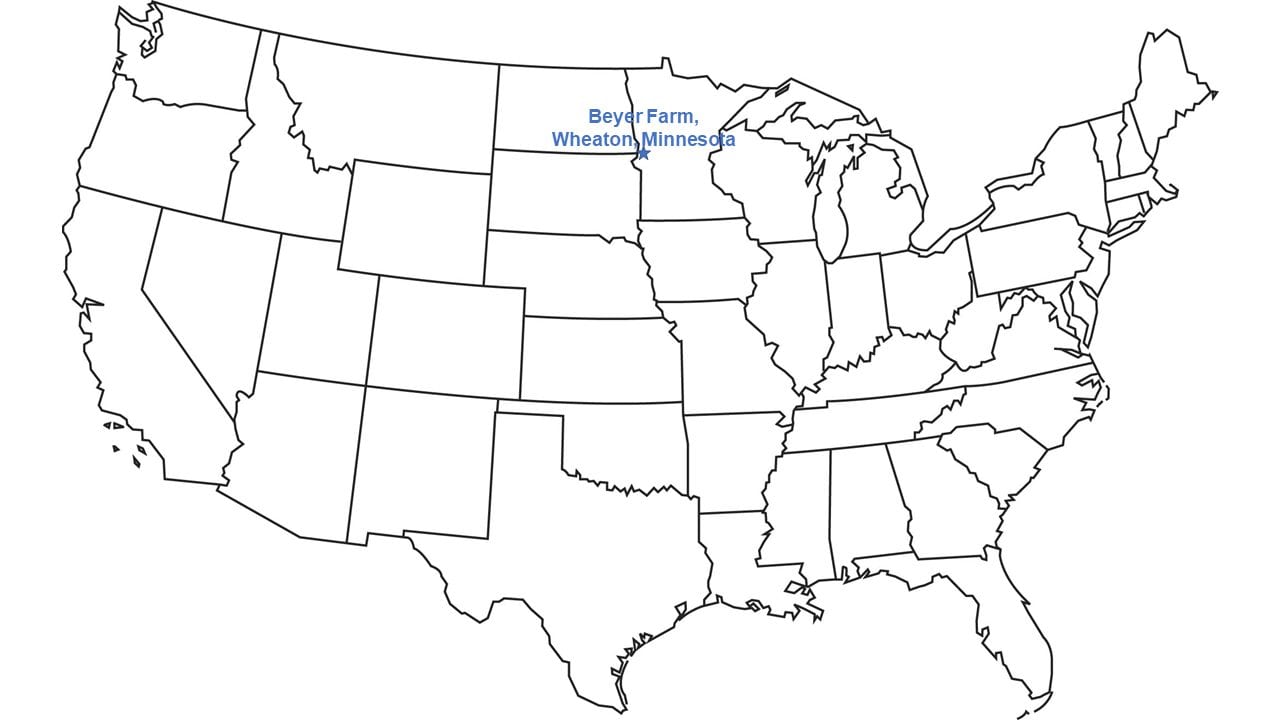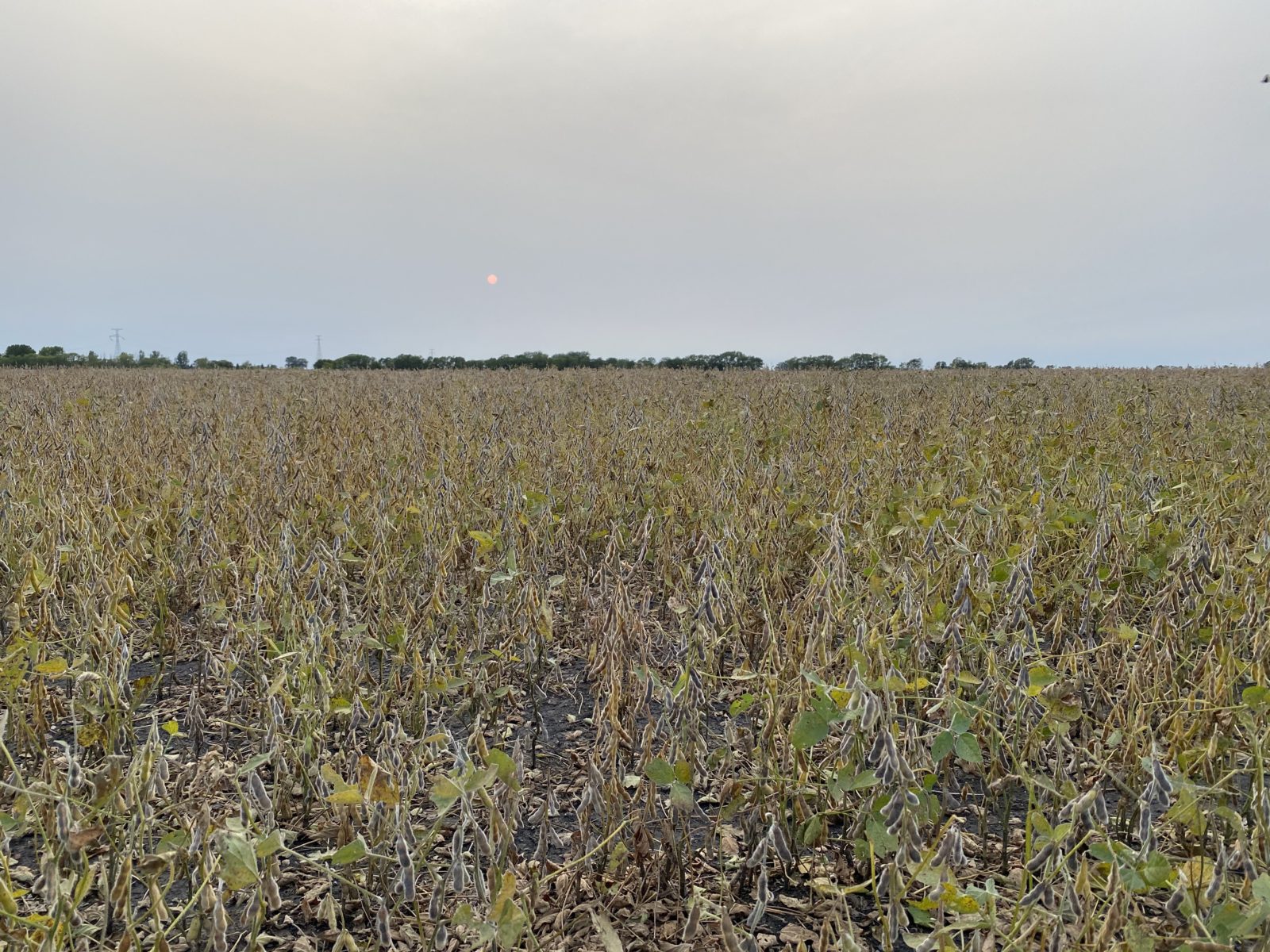We have continued to have a hot summer with plenty of rain in our area of the north-central U.S., so the two-thirds of our crops that weren’t destroyed by hail in July look really good. We have been getting rains of between 1 and 2.5 cm, or .5 to 1 inch, weekly.
The one-third of our crops that were severely damaged by hail will be appraised by our crop insurance at harvest, and that will determine how we manage those fields as we prepare for next year. Some of our neighbors have already destroyed their hail-damaged fields, as required for their crop insurance. It’s hard to till up a crop – even a heavily damaged one – instead of harvesting it.
 But our undamaged crops are looking really good as harvest slowly gets underway.
But our undamaged crops are looking really good as harvest slowly gets underway.
We harvested our hard red spring wheat in the middle of August. We had above average yields, but harvest was slowed by the regular rains. We had to dry the wheat to the right moisture to maintain its quality, and it is currently stored in one of our storage bins. However, we will haul it to a local grain elevator, where it will be loaded on a train and shipped to the Pacific Northwest region of the U.S. to be exported. We will need to do this before we start harvesting corn so that we have room to store that crop.
In mid-August, we also got our fourth and final cutting of alfalfa for the year. It was an average crop, but now the field will be allowed to grow until it freezes to help it overwinter well. The vegetation that grows this fall will be harvested next spring.
In late August, we started slowly harvesting some of our sugarbeets, and we do appear to have our best crop ever, in our undamaged fields. We are already yielding more than 83 metric tons per hectare, or 30 U.S. tons per acre.
Sugarbeets are harvested with a couple steps. First, a defoliator is pulled through the field to cut off the plant leaves from the root crown. Then, a sugarbeet puller drags blades through the soil underneath the sugarbeets to lift them from the soil. It brushes off much of the dirt and augers the beets into trucks. The sugarbeets are then hauled to piling grounds, designed to store sugarbeets for the factories that process them into sugar.
Our sugarbeet refinery has started operating for the year. But when temperatures are warm, through August and September, the factory only allows growers like us to harvest what they can process in a day, so that the sugarbeets don’t spoil. That means we harvest a couple days every couple weeks, and deliver our allowed quota of sugarbeets to our piling ground, which is about 24 km, or 15 miles, away. We are just opening up fields and harvesting around the outside in preparation for when sugarbeet harvest starts in earnest, usually about October 1.
 Sugarbeets must be harvested and stored at temperatures that prevent spoiling. Once our temperatures are between 0°C and 13°C, or 32°F and 55°F, we will be able to harvest at the pace we choose. If the root crown of a sugarbeet freezes while it is in the ground, the crop can spoil. But if the storage piles get too warm, they also can spoil. But when we reach ideal storage temperatures, we pile the beets in long storage piles. Once they are out of the ground, they can freeze without damage. The factory will haul sugarbeets from the storage piles to make sugar throughout fall, winter and spring, using all of this year’s harvest by the beginning of the following June, when temperatures again are too warm for storage. We have noticed higher average temperatures in our areas, so the piling facilities have added ventilation and freezers to maintain crop quality.
Sugarbeets must be harvested and stored at temperatures that prevent spoiling. Once our temperatures are between 0°C and 13°C, or 32°F and 55°F, we will be able to harvest at the pace we choose. If the root crown of a sugarbeet freezes while it is in the ground, the crop can spoil. But if the storage piles get too warm, they also can spoil. But when we reach ideal storage temperatures, we pile the beets in long storage piles. Once they are out of the ground, they can freeze without damage. The factory will haul sugarbeets from the storage piles to make sugar throughout fall, winter and spring, using all of this year’s harvest by the beginning of the following June, when temperatures again are too warm for storage. We have noticed higher average temperatures in our areas, so the piling facilities have added ventilation and freezers to maintain crop quality.
Our undamaged soybeans continue to look really good, and our earliest maturities have reach the R6 growth stage, with full seeds developed, and they are starting to turn color. These soybeans will likely be ready to harvest around Sept. 20. Our regular rains have been really good for the soybeans, and the later maturities continue to fill their pods.
Our undamaged corn also looks really good. Our high temperatures have helped it to grow well, and the kernels are currently accumulating dry matter and moving toward maturity. We expect to start picking corn in mid-October. Before then, we will finish delivering our large 2019 corn crop to a local ethanol plant.
Watershed district projects have progressed through the summer, though some have gone more smoothly than others. We are starting to plan projects for next summer, but restrictions due to the COVID-19 pandemic have made it challenging to communicate with landowners as we plan those projects.
We will also check on our bee hives to see if they have enough honey to share with us this fall, or if we need to leave it all for them to survive the cold Minnesota winters.
Our current preparation stage for harvest is a bit slow as summer ends, but we will be much busier very soon.

